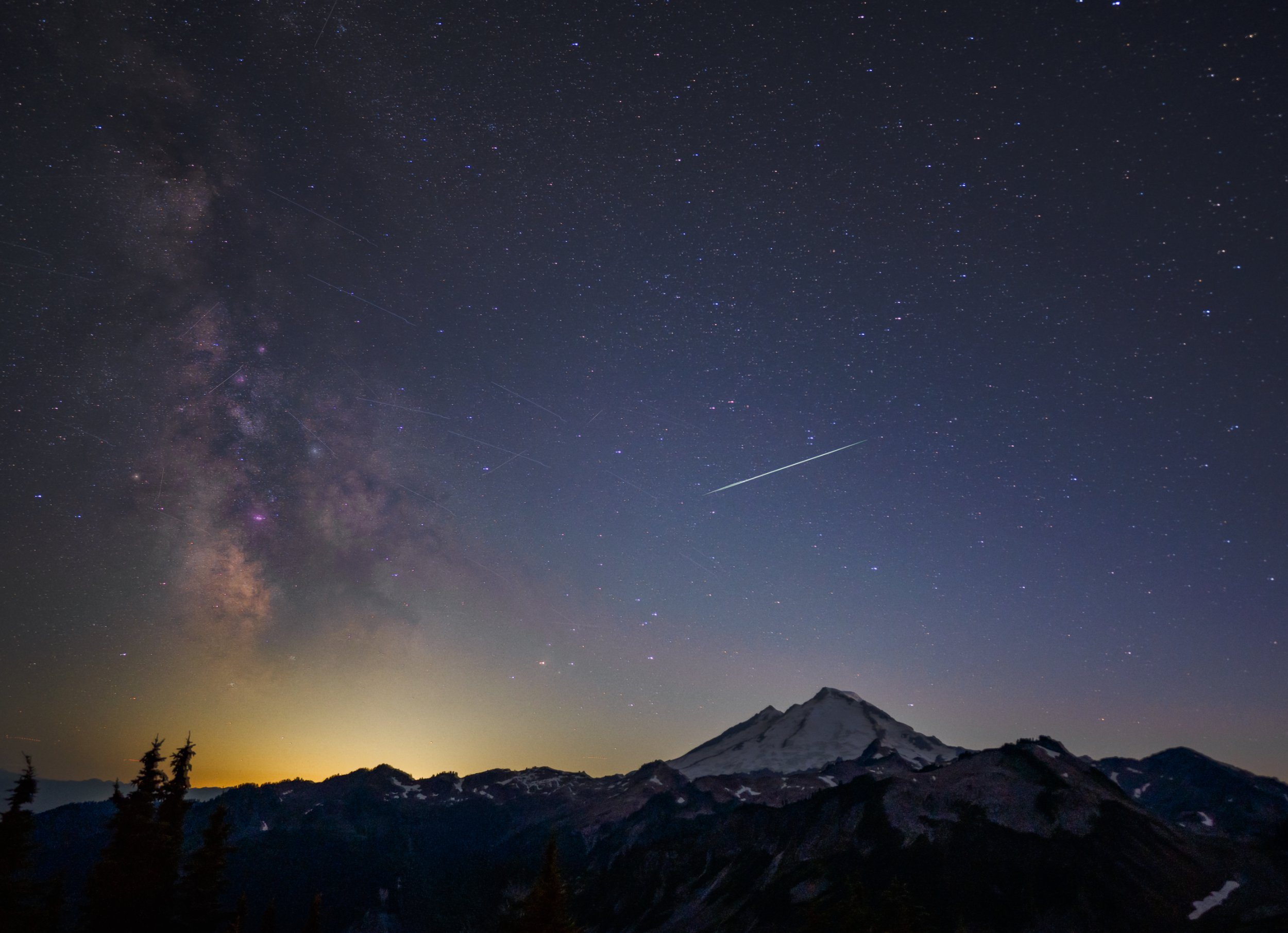Science
Discover Meteorites on Your Roof: A New Urban Science Trend

A growing trend among amateur astronomers is taking shape in urban areas: the search for meteorites on flat roofs. According to experts, tiny meteorites, some less than a millimetre wide, are likely present on rooftops across cities like London. Joshua Howgego, a meteorite specialist, highlighted this phenomenon during the recent New Scientist Live festival, noting that many people may unknowingly have these space rocks just above their heads.
Meteorites are of significant interest to scientists because they represent ancient remnants from the formation of the solar system. Unlike terrestrial rocks, which have been reshaped by geological processes over billions of years, meteorites offer a glimpse into the early solar system’s history. Howgego referred to them as “time capsules” that provide insights into the materials that formed the planets approximately 4.5 billion years ago.
How to Find Meteorites on Your Roof
While large meteorites are rare, smaller ones frequently land on Earth, often going unnoticed among common rocks and dirt. Traditionally, astronomers have searched remote locations like Antarctica and deserts, where meteorites are easier to spot against contrasting backgrounds. However, a 2017 paper published in the journal Geology by Jon Larsen and a team of astronomers demonstrated that urban environments, particularly flat roofs, could also yield valuable finds.
The process of hunting for meteorites involves some basic steps. First, individuals should safely access a flat roof equipped with bags, a dustpan, and a brush to collect dirt, moss, and debris. After collecting the material, it should be washed in water with some liquid soap to separate any floating debris. This process may need to be repeated until the water runs clear, leaving behind tiny particles that may include meteorites.
Next, a strong magnet, such as those used for “magnet fishing,” can be used to sift through the rock particles. Those that adhere to the magnet should be set aside for further examination. The final step involves using a microscope with at least 50-times magnification to identify any potential meteorites. Unlike ordinary Earth rocks, meteorites typically exhibit a spherical shape due to melting upon entering the atmosphere.
The Scientific Significance of Rooftop Finds
Rooftop meteorite hunting is more than just an engaging hobby; it contributes to scientific understanding as well. The collection described in Larsen’s paper provided fresh insights into micrometeorites, particularly since these specimens had landed recently, unlike many older meteorites found in remote locations. Howgego emphasized that before this paper, scientists lacked a clear understanding of what fresh micrometeorites looked like.
Amateur collectors have also made intriguing discoveries. For instance, earlier this year, a collector in Italy found a rare meteorite composed of aluminium and copper, believed to have originated from a protoplanet that disintegrated due to an impact while forming. Dr. Matthew Genge, an astronomer at Imperial College London who collaborated with Larsen, noted the significance of these findings for advancing scientific knowledge.
In the UK, Dr. Matthias van Ginneken, a cosmochemist at the University of Kent, has begun his own searches on top of historic buildings, including Canterbury Cathedral. He plans to systematically explore cathedrals across the country, recognizing that larger surfaces increase the chances of finding micrometeorites.
For those with smaller roofs, the potential for discovery remains. Estimates suggest that approximately one tiny meteorite falls per square metre each year, indicating that many urban residents are likely surrounded by particles of extraterrestrial origin. Dr. Genge remarked, “You are almost certainly sitting under little pieces of dust from outer space that are older than Earth and are about the same age as the Sun.”
This urban exploration of meteorites opens new avenues for both amateur enthusiasts and professional scientists, bridging a gap between everyday life and the mysteries of the cosmos. As the trend grows, it highlights the endless fascination with our universe and the untold stories that meteorites carry with them.
-

 Health3 months ago
Health3 months agoNeurologist Warns Excessive Use of Supplements Can Harm Brain
-

 Health3 months ago
Health3 months agoFiona Phillips’ Husband Shares Heartfelt Update on Her Alzheimer’s Journey
-

 Science1 month ago
Science1 month agoBrian Cox Addresses Claims of Alien Probe in 3I/ATLAS Discovery
-

 Science1 month ago
Science1 month agoNASA Investigates Unusual Comet 3I/ATLAS; New Findings Emerge
-

 Science4 weeks ago
Science4 weeks agoScientists Examine 3I/ATLAS: Alien Artifact or Cosmic Oddity?
-

 Science4 weeks ago
Science4 weeks agoNASA Investigates Speedy Object 3I/ATLAS, Sparking Speculation
-

 Entertainment4 months ago
Entertainment4 months agoKerry Katona Discusses Future Baby Plans and Brian McFadden’s Wedding
-

 Entertainment4 months ago
Entertainment4 months agoEmmerdale Faces Tension as Dylan and April’s Lives Hang in the Balance
-

 World3 months ago
World3 months agoCole Palmer’s Cryptic Message to Kobbie Mainoo Following Loan Talks
-

 Science4 weeks ago
Science4 weeks agoNASA Scientists Explore Origins of 3I/ATLAS, a Fast-Moving Visitor
-

 Entertainment4 months ago
Entertainment4 months agoLove Island Star Toni Laite’s Mother Expresses Disappointment Over Coupling Decision
-

 Entertainment3 months ago
Entertainment3 months agoMajor Cast Changes at Coronation Street: Exits and Returns in 2025









